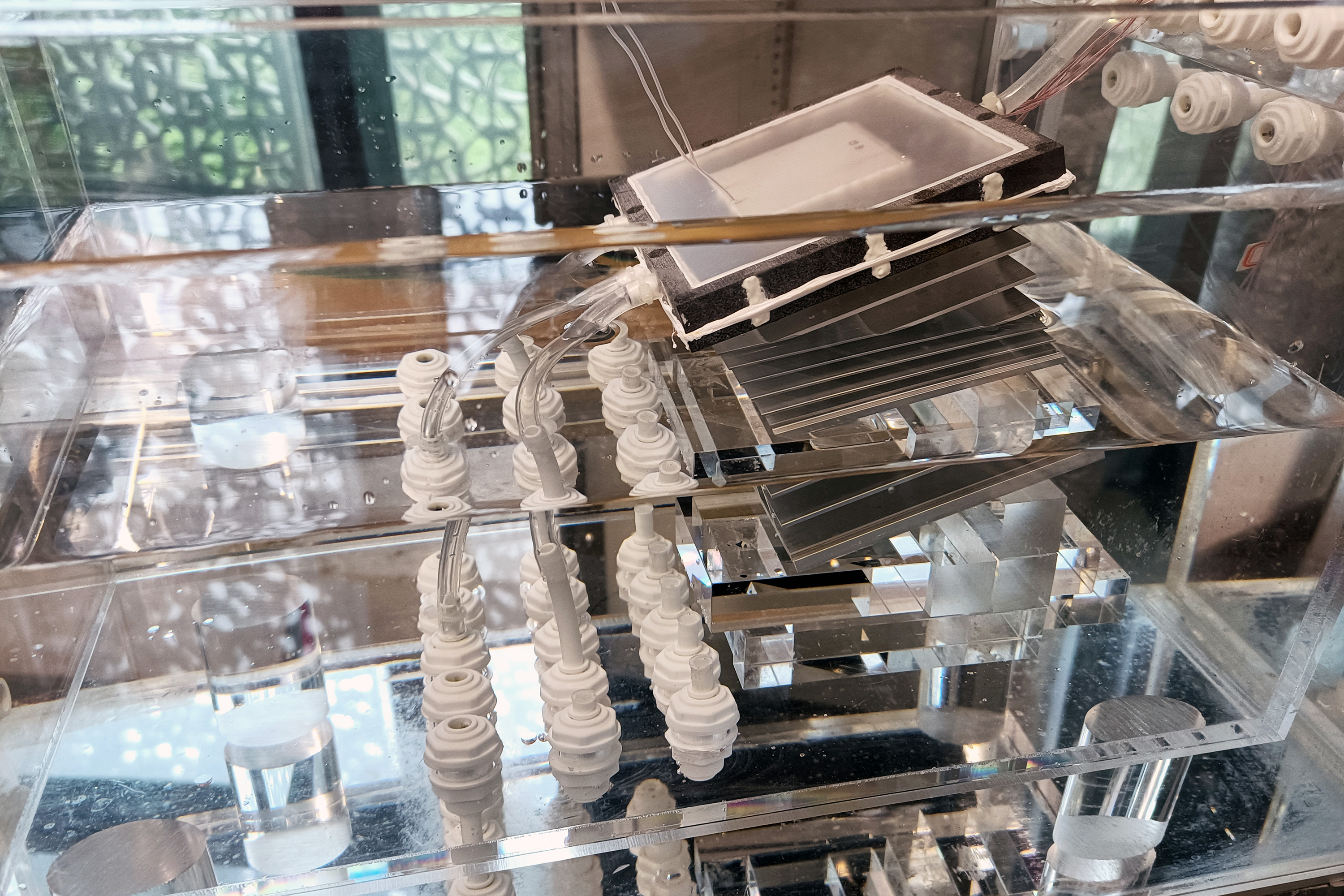Engineers at MIT and in China are aiming to turn seawater into drinking water with a completely passive device that is inspired by the ocean, and powered by the sun.
In a paper appearing today in the journal Joule, the team outlines the design for a new solar desalination system that takes in saltwater and heats it with natural sunlight.
The researchers estimate that if the system is scaled up to the size of a small suitcase, it could produce about 4 to 6 liters of drinking water per hour and last several years before requiring replacement parts. At this scale and performance, the system could produce drinking water at a rate and price that is cheaper than tap water.



This sounds fantastic on its face, but I seem to keep on hearing about how desalination will solve all kinds of problems and we still have this particular problem.
The missing piece, it seems, is the will for it to be used as infra at scale. Meanwhile selling bottled water taken for free from public lands for several dollars a liter in single-use bottles remains a multi-billion dollar industry. (an industry, I might add, that is aggressive about lobbying to protect its interests)
Not to mention if we do this at enough scale it will raise the salinity of the ocean and, you know, kill everything.
If care isn’t taken to avoid concentrating brine going back in just one spot, sure that could create localized problems. Buuut, you realize that the oceans constantly lose water to evaporation and their salinity is more or less stable, right? Every bit of rain or snow that falls on land (most of which returns to the ocean eventually) is water the ocean can be without and still not too salty for life.
Speaking of salinity, the Atlantic Meridional Overturning Current (which in normal conditions, is the deep/cold return current from the gulf stream -> North Atlantic) is running into a big damned problem because Greenland is melting and all that fresh water pouring off of it is disrupting the return flow of cold water to the tropics. That’s why the Gulf Stream has been so hot- it’s not getting return feed from its radiator in the North Atlantic, and meanwhile the North Atlantic is getting colder because it’s not cycling water back south, and that prevents hot Gulf Stream water from getting there.
Edit: I recently learned that concentrated brine regions in the oceans (called brine pools) are a thing. There are massive salt deposits (as much as 8km thick) under the bottom of the Gulf of Mexico today, the legacy of a time when the gulf was closed off from the oceans- when it refilled, the salt layer was covered over. Today, the deposition on top of it is heavy enough that subsidence within it squeezes the softer salt around, occasionally exposing that salt to the ocean water.
This sounds like an idea for a disaster movie!
(Yes, I know.)